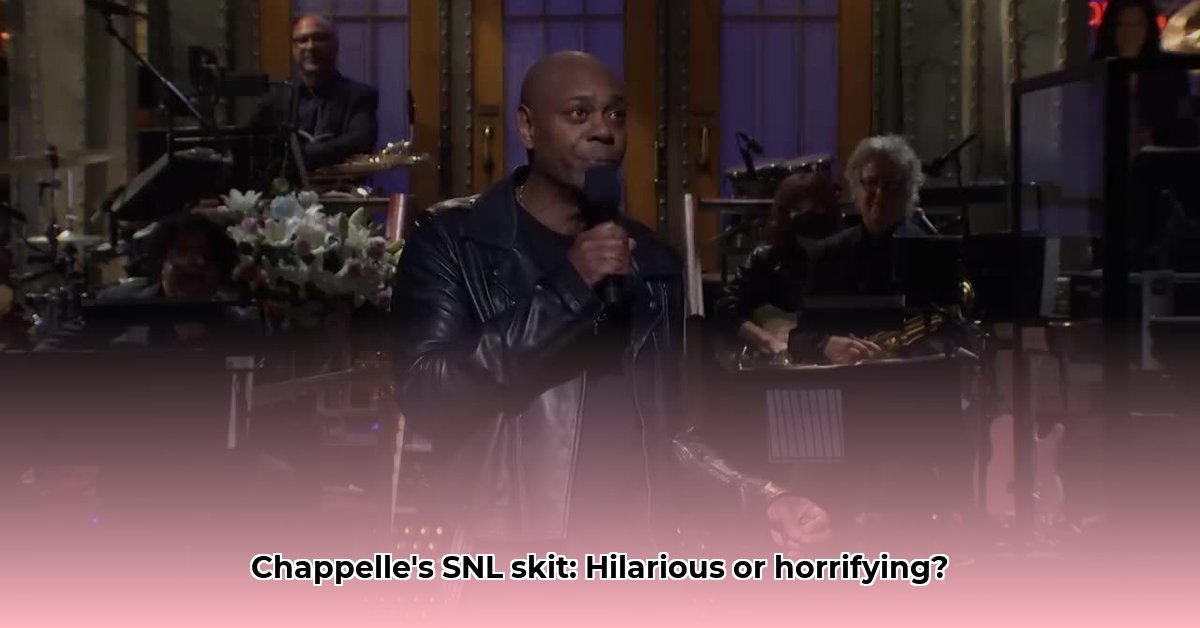The Firestorm After the Fire: Dissecting Chappelle’s SNL Skit
Dave Chappelle’s return to Saturday Night Live on January 18, 2025, was marked by his signature blend of provocative humor and social commentary. However, one skit, set against the backdrop of the recent Los Angeles wildfires, ignited a firestorm of controversy. Airing during Season 50, Episode 11, the sketch depicted a family’s chaotic evacuation, replete with hidden cash, a fake passport, an unexpected French family residing within their walls, and a bizarre instance of canine surgery involving illicit substances. The public’s reaction was as volatile as the wildfires themselves, ranging from enthusiastic applause to accusations of insensitivity.
Inside the Inferno: A Scene-by-Scene Analysis
The skit unfolds like a darkly comedic nightmare. The familiar shriek of an evacuation alert shatters a seemingly normal family evening. Chappelle’s character, the father, reacts not by gathering essential belongings, but by frantically retrieving hidden valuables from within the walls. This sets the stage for a series of increasingly absurd events.
Act One: The Siren’s Call: A seemingly ordinary family night is disrupted by the all-too-real sound of an evacuation order. This immediately establishes a tension between normalcy and impending chaos.
Act Two: Secrets Unveiled: The father’s unconventional evacuation preparations reveal hidden compartments containing cash, a fake passport, and a firearm, hinting at a life beyond suburban normalcy. Adding to the surrealism, a second, secret family emerges from behind the walls.
Act Three: Canine Crisis and Uninvited Guests: An intruder appears, shots are fired, and the family dog swallows a cell phone, prompting the father to perform impromptu surgery. The escalation of absurdity continues, pushing the boundaries of dark humor.
Act Four: The Test and the Aftermath: A false alarm brings an unsettling resolution. The father congratulates his family on “passing the test,” leaving the audience to decipher the meaning of this bizarre ordeal. A cryptic final line about the cat adds to the skit’s unsettling ambiguity.
The Fallout: Public Reaction and Chappelle’s Legacy
The online response was immediate and divided. Some lauded Chappelle’s audacity and comedic timing, viewing the skit as a brilliant satire of how people react under pressure. Others condemned it as insensitive and exploitative, trivializing the trauma experienced by wildfire victims.
This controversy isn’t new for Chappelle. His comedic style has consistently pushed boundaries, sparking dialogue on sensitive topics such as race, identity, and politics. This SNL appearance is another chapter in his ongoing conversation with the audience, raising questions about the limits of humor and the responsibility of comedians wielding a public platform.
Deconstructing the Discourse: Interpreting the Skit
The skit’s meaning remains open to interpretation. Some suggest it’s a commentary on misplaced priorities in times of crisis, satirizing the tendency to focus on material possessions over safety and well-being. Others see it as a critique of “prepper” culture, exaggerating its anxieties and absurdities. The presence of the hidden family might symbolize the secrets and lies that exist within seemingly normal families, brought to light under the pressure of extraordinary circumstances. The skit’s ambiguity invites viewers to grapple with its multiple potential meanings.
| Interpretation | Evidence |
|---|---|
| Commentary on misplaced priorities | Focus on retrieving valuables over essential items. |
| Satire of “prepper” culture | Exaggerated focus on firearms and hidden supplies. |
| Exploration of family secrets | The revelation of a hidden second family. |
| Critique of media sensationalism | The escalating absurdity mirroring media’s tendency to amplify fear. |
The Broader Context: Comedy, Censorship, and Trauma
The skit’s wildfire setting adds another layer of complexity. By using a recent, real-world tragedy as a backdrop for dark humor, Chappelle ventures into ethically ambiguous territory. This raises questions about the appropriateness of joking about traumatic events and the potential for humor to cause harm. The debate extends beyond Chappelle, prompting broader discussions about the role of comedy in processing difficult realities, the boundaries of satire, and the sensitivities surrounding real-world tragedies. Some argue that humor can be a coping mechanism, while others caution against the potential for trivialization and insensitivity. Ongoing research into the psychology of humor could shed light on these complex dynamics.
The Unresolved Questions
The controversy surrounding Chappelle’s SNL skit leaves us with several unanswered questions:
- Does humor have a responsibility to be sensitive to trauma?
- Where do we draw the line between satire and exploitation?
- How can we engage in productive dialogue about challenging comedic material?
These questions likely will continue to be debated, demonstrating the enduring power of comedy to both provoke and offend. Chappelle’s skit, whether deemed brilliant or tasteless, has undoubtedly left a lasting impression, reminding us of the complex and ever-evolving relationship between comedy and our world.







